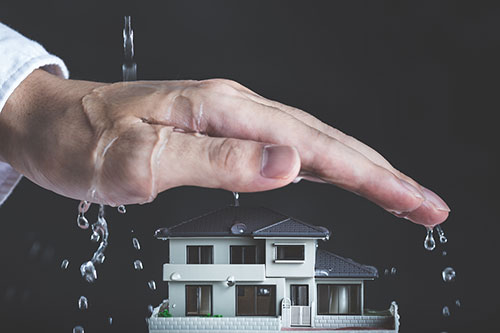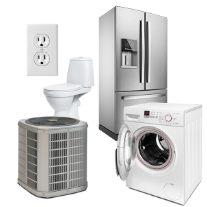Even minor roofing problems can lead to serious water damage both inside and outside a home. Here’s our do-it-yourself guide to roof leak repair:
Finding the Leak
Unfortunately, because water tends to migrate away from an entry point as it is pulled by gravity, it’s not always easy to find the origin of a leak. That said, you have to start somewhere.
First, check to see if there is any damage in the roof directly above the water stain or leak. This will be a lot easier with a flat roof, since water can travel a good distance from an entry point on angled roofs. If your roof is slanted, you will want to inspect portions of the roof that are higher than where you notice the leak inside your home.
If you have an attic, check for black marks, mold or water stains in the ceiling. If you can’t seem to find the origin of your leak, consider asking a friend to run water over the roof using a garden hose, while you wait in the attic to see where water is entering.
You will also want to carefully inspect your roof, looking for curled, damaged, or missing shingles, along with exposed roofing tacks. If you notice any of this, make repairs to see if this puts an end to your leak.
Making Repairs
If your asphalt shingles are curled, go ahead to straighten them. If the weather is cold, you may have to soften the shingle edge using an artificial heat source, such as a hair dryer. Avoid using any heat source with a flame, since your shingles could catch fire. Once you straighten the shingles, reattach them using asphalt roof cement.
If shingles are missing or crumble away with little effort, you will need to replace them. Start by lifting the edges and pry out the nail, using a roofing hammer. Next, scrape out any leftover roofing cement to create a flush surface. Use a utility knife to round off the corners of the new shingle and then slide it in place. Affix the new shingle by driving in 1-4 inch galvanized roofing nails at the upper corners. You should then cover the nailheads with roofing cement.
Checking Other Potential Sources
In addition to damaged shingles, you should inspect any areas where surfaces connect, such as around vent pipes and chimneys. Replace damaged or missing caulking as needed. If you notice damage around the vent boots or chimney flashing, make replacements as needed.
When to Call a Roofer
If you can’t seem to locate the source of a roof leak, it’s best to call a professional roofer without delay. By the time you notice a leak, it may have already caused serious damage to interior structures. If the roof or gutter damage is causing water to pool near your home’s foundation, you could also be risking serious structural problems.
For these reasons, it’s a good idea to address an especially sneaky roof leak as soon as possible by hiring a professional. You should also seriously consider the risk of injury before attempting a do-it-yourself roof repair, especially if you aren’t accustomed to working up high or your roof has an especially steep angle.
2-10 HBW offers the most comprehensive Home Warranty coverage for homeowners. Let us help you protect your home.








